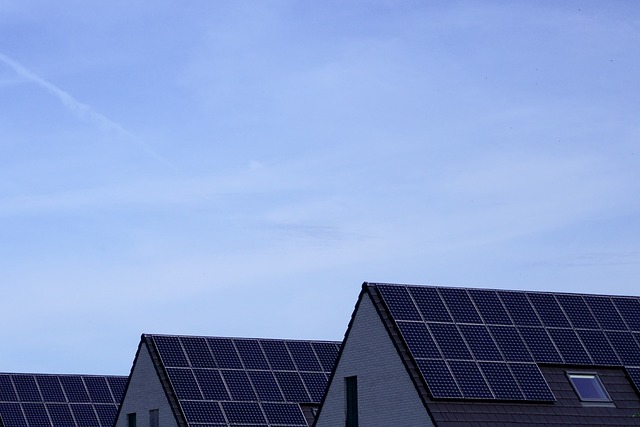The Foundation of Green Building Certifications in the EU
Europe stands at the forefront of environmental sustainability, with public infrastructure development heavily influenced by a range of green building standards and certifications. The primary certifications, such as LEED (Leadership in Energy and Environmental Design), BREEAM (Building Research Establishment Environmental Assessment Method), and the DGNB (German Sustainable Building Council), serve as benchmarks for sustainability in building projects across the EU. These frameworks evaluate energy use, CO2 emissions, and overall environmental impact, guiding architects and developers in creating energy-efficient and environmentally friendly buildings. For instance, the Edge Olympic in Amsterdam, renowned for its state-of-the-art sustainable design, achieved a Platinum LEED certification, spotlighting the high standards set by such certifications in urban development projects.
Impactful Projects Across Europe
Several EU-funded projects highlight the practical applications and benefits of adhering to these certifications. The Smart and Sustainable Homes program in Denmark exemplifies the integration of innovative technologies for energy efficiency, significantly reducing CO2 emissions while maintaining modern aesthetic standards. Similarly, the ECO-City project in Tübingen, Germany, demonstrates how regional networks and collaboration can foster sustainable urban development, resulting in a 40% reduction in energy consumption compared to conventional constructions.
Role of EU Funding and Support in Promoting Sustainable Practices
EU initiatives play a pivotal role in encouraging the adoption of green building standards through substantial funding and support mechanisms. The European Regional Development Fund (ERDF) and the Horizon Europe program specifically allocate billions of euros to support infrastructure projects that comply with stringent environmental criteria. These funds not only promote the initial adoption of green standards but also ensure the long-term sustainability of projects. For example, the Horizon 2020 project facilitated the renovation of historical buildings in Budapest, integrating modern energy-saving technologies without compromising their heritage values.
Exploring the Financial Incentives for Green Certification
The financial incentives provided by the EU for projects achieving green certification are substantial. Tax reductions, reduced loan interest rates, and grants are available for projects that demonstrate significant energy savings and sustainability. These incentives not only ease the financial burden on developers but also encourage more widespread adoption of green practices in public infrastructure projects across Europe.
Enhancing Energy Savings and CO2 Reduction through Innovative Building Techniques
Advanced building techniques and materials play a crucial role in enhancing the energy efficiency of public buildings. The use of photovoltaic glass, green roofs, and smart building technologies are among the innovations that have been successfully implemented in recent projects. The Photon Space project in London, which incorporates an all-glass structure that adjusts its transparency to optimize light and temperature, stands as a testament to how innovative materials can drastically improve energy efficiency.
Examples of Energy-Efficient Building Practices
Аpplications of these techniques can be seen in projects like the SolarBeat Music Hall in Sweden, where solar panels cover the entire facade, turning a traditional building into a self-sustaining entity. Additionally, the Green Lighthouse in Copenhagen, Denmark’s first public carbon-neutral building, uses natural materials and advanced automation systems to minimize its energy use and maximize comfort for its occupants. It becomes evident that the EU is not only setting standards but also paving the way for a sustainable future through its innovative approaches to public infrastructure development.
Detailed Analysis of Current EU Regulations and Green Building Compliance
The stringent EU regulations governing public infrastructure are meticulously designed to align with overarching sustainability goals. Key directives and standards such as the Energy Performance of Buildings Directive (EPBD) and the EU Green Deal set a robust framework for achieving considerable reductions in greenhouse gas emissions. Specifically, the EPBD mandates that all new buildings must be nearly zero-energy buildings (NZEB) by the end of 2020 for public buildings and by 2021 for all new constructions, which demonstrates the EU’s commitment to leading by example in energy efficiency.
Key Elements of the EPBD and Their Impact
- Energy Performance Certificates (EPCs): These are required for all buildings constructed, sold, or rented out in the EU. EPCs contain information about a property’s energy use and typical energy costs and provide recommendations about how to reduce energy use and save money.
- Inspection of heating and air conditioning systems: Regular inspections of these systems are mandated to ensure optimal performance and energy efficiency. This not only aids in maintaining the building’s compliance with green standards but also helps in reducing operational costs.
- Implementation of smart technologies: The directive encourages the use of smart technologies such as automation and control systems that significantly enhance the energy performance of buildings.
Integration of the EU Green Deal’s Ambitions
- Boosting the renovation wave: The Green Deal targets a renovation rate of at least 2% per year to improve energy efficiency, especially in older buildings, which are a significant part of Europe’s built environment.
- Promoting sustainable products: The focus is also on the materials used in construction, pushing for reduced life cycle carbon emissions. This includes everything from the mining of raw materials to the production, transport, usage, and disposal of construction products.
This regulatory environment not only ensures that new buildings meet the highest environmental standards but also encourages existing buildings to upgrade their systems to reduce their carbon footprint effectively. The science-driven, regulatory-backed approach ensures that sustainability is not just an optional extra but a fundamental aspect of building design and construction across Europe.

